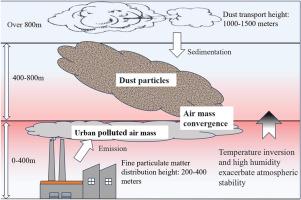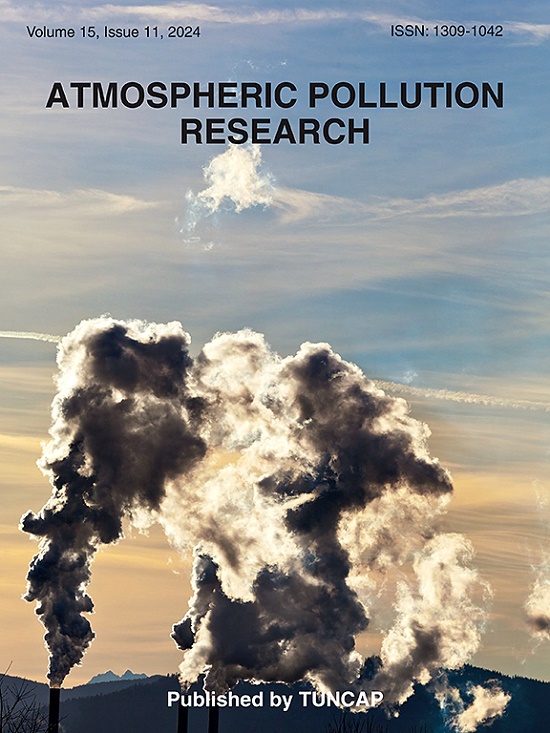Multivariate data analysis of a severe air pollution event in Shihezi City, China
IF 3.5
3区 环境科学与生态学
Q2 ENVIRONMENTAL SCIENCES
引用次数: 0
Abstract
A severe air pollution event occurred from January 23 to February 12, 2024 in Shihezi City, China. To reveal the causes, pollutant sources, and the role of vertical atmospheric structure on the occurrence and development of this event and pollutant diffusion, the air pollution process and causal mechanisms were analyzed based on surface meteorological observation data, vertical observation data, and reanalysis data. The results showed that coarse particulate matter was mainly distributed in the range of 1000 - 1500 m in the upper atmosphere, and fine particulate matter was mainly distributed in 200 - 400 m, with the variation of low during the day and high at night. The analysis of 500 hPa circulation showed that this severe air pollution event was mainly caused by the stable stratification of the near-surface atmosphere and the small pressure gradient caused by the long-term control of high-pressure ridge that was not conducive to pollutant diffusion. The polluted air mass in the urban was difficult to diffuse due to temperature inversion and inhibition of boundary layer. The sand and dust transported from other regions were affected by the static wind to settle and mix, which aggravated the pollution degree of the urban air mass. The polluted air masses were transmitted between cities, while the long-distance transmission was not obvious.

石河子市一次严重空气污染事件的多变量数据分析
2024年1月23日至2月12日,中国石河子市发生了一次严重大气污染事件。基于地面气象观测资料、垂直观测资料和再分析资料,分析了大气污染过程及其成因、污染源和大气垂直结构对此次事件发生发展和污染物扩散的作用。结果表明:大气上层粗颗粒物主要分布在1000 ~ 1500 m范围内,细颗粒物主要分布在200 ~ 400 m范围内,呈现白天低、夜晚高的变化规律;500 hPa环流分析表明,此次严重大气污染事件的主要原因是近地面大气的稳定分层和高压脊长期控制造成的小压力梯度,不利于污染物扩散。由于逆温和边界层的抑制作用,城市污染气团难以扩散。其他地区运来的沙尘受静风影响沉降混合,加重了城市气团的污染程度。污染气团在城市间传播,但长距离传播不明显。
本文章由计算机程序翻译,如有差异,请以英文原文为准。
求助全文
约1分钟内获得全文
求助全文
来源期刊

Atmospheric Pollution Research
ENVIRONMENTAL SCIENCES-
CiteScore
8.30
自引率
6.70%
发文量
256
审稿时长
36 days
期刊介绍:
Atmospheric Pollution Research (APR) is an international journal designed for the publication of articles on air pollution. Papers should present novel experimental results, theory and modeling of air pollution on local, regional, or global scales. Areas covered are research on inorganic, organic, and persistent organic air pollutants, air quality monitoring, air quality management, atmospheric dispersion and transport, air-surface (soil, water, and vegetation) exchange of pollutants, dry and wet deposition, indoor air quality, exposure assessment, health effects, satellite measurements, natural emissions, atmospheric chemistry, greenhouse gases, and effects on climate change.
 求助内容:
求助内容: 应助结果提醒方式:
应助结果提醒方式:


